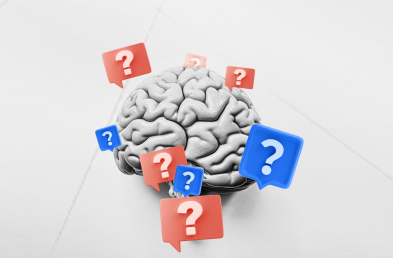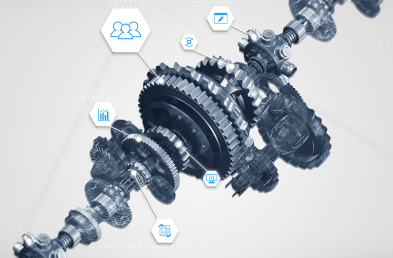Learning strategies serve different goals and aim to have a positive impact on employee performance over time. They can be short-term, or they can be long-term. They can include single courses or year-long curriculums. The variables are endless.
When executing your learning strategy within the online world, you need to have resources at hand to create a unique experience. One that is aligned with your goals and, most importantly, aligned with the user’s needs and expectations to make it engaging and compelling.
The option to create a full-scale training program by leveraging the capabilities of your Learning Management System (LMS) and developing a dedicated training site is a very effective opportunity to engage your employees and enhance their learning experience through customized resources and learning plans.
The first step in implementing a training program is to be clear on its extension, autonomy, and development.
Take AchieveCOR -our Health & Safety Management System (HSMS) powered by ALEN- as an example.
AchieveCOR is an ALEN LMS instance that integrates some of our Systems & Plugins to deliver comprehensive COR training, Audit and Tracking Tools, and Document and Certification Management to the Construction industry.
- Extension
When it comes to Occupational Health & safety (OHS) and Certifications in a highly regulated industry such as construction, the requirements can vary per organization size, projects, number of employees, and more.
With this comes the courses you need to develop and how you would track the completion of each employee while providing the corresponding certification. All while being compliant with legislative requirements and safety standards.
The program’s extension can be based on time vs. learning plan or curriculum; it can be asynchronous, meaning the employee works through it at their convenience and many other options that could be better aligned to your goals.
Being clear about this extension defines the resources you need in place and the strategy to create a high-quality training program.
- Autonomy
A self-sustainable training program functions over time without depending on the execution of other resources within the organization, and it follows its overarching goal.
The program’s autonomy allows the Learning Strategy team to execute plans and operations without affecting the main LMS or the organization’s main learning plan while complementing its functionality and working towards bigger goals and achievements.
DevelopmentIn this context, development refers to the execution and progress of the training program. As the user goes through it and time passes, the program will adapt to new requirements, fixes, updates, and more.
You will start measuring its impact and make improvements based on new opportunities or gaps you may find along the way. The key is to be clear on how you will measure the performance of your program and how you will execute controls and evaluations on every checkpoint your team may define, to later continue with your strategy.
Once the team is clear on the first step, they can start planning the structure of the program. A good approach is going from general to specific – this applies to needs, users, courses, and goals.
Goals & Objectives
Having a clear goal for your training program means having a direction. From here, you can break down the goal into objectives that will help you get to the finish line effectively and efficiently.
With clear objectives comes strategy. How are we going to meet these objectives? What is our play? Then move into Tactics – what is our next move?
This sounds like a detailed Business or Marketing Plan but having a clear roadmap to create your training program means understanding the needs and gaps you must cover and what you need to do to bring it to life -from design to content development to tracking features and user segmentation.
Users & User Sets
You have the idea of your training program and what you want to achieve. Now it’s time to define who this is for.
We can have a variety of positions, levels, or even types of jobs available for one specific training program. This means that the perception, needs, courses and delivery of the training program can be different for specific users.
Defining who will be part of this program is essential for successful delivery and completion. You want the right course for each group of users, and you don’t want unnecessary processes within your platform.
ALEN LMS provides a great tool to implement a segmentation strategy aligned with your organization’s structure. The User Sets plugin allows you to establish sets of users based on your program planning, company structure, multitenancy, etc. This way you ensure efficient delivery and you’ll be able to automate onboarding, certifications, notifications, tracking features, document management, and many other features available that different departments may require.
Curriculum & Courses
With the knowledge and understanding you have of your users, now it is time for content. By now, your team knows what they must teach and what they need to achieve through the course.
Depending on the extent of the subject, you can develop a detailed curriculum that would include courses and modules to be completed over time.
Here is when you define the length of your training program, and depending on your subject and content, you can break it down into modules, courses, build different hierarchies and tiers, or make one big program.
A Learning Management System will allow you to organize your training program in a way that focuses on User Experience (UX) and provides a friendly and adaptable interface.
Distribution
You have a full-scale training program now that is well-structured and with high-quality content. The next step is to figure out how do we deliver said program.
Users will be in different places at different times and will use a variety of devices and screen sizes. You have to also think about browsers and accessibility.
Starts with devices. Make sure your content and platform are responsive. Better is your LMS integrates a Mobile App like ALEN Mobile -this is very practical especially for employees who are out and about all day.
Don’t forget to include Alternative and Descriptive Text to ensure accessibility.
Finally, Branding
A full-scale training program is an autonomous by-product of your brand and will be successful based on how engaging it can be.
Branding is a powerful and necessary tool to establish a strategy that will connect with your users, communicate the direction, benefits, and values of your brand, and position your product effectively. As a result, based on your objectives, Branding will help you increase your Engagement Rate, generate more subscriptions to your program, solidify the image of your brand and brand loyalty for your organization, and overall, provide a comprehensive on-platform experience for your users.
Keep in mind that your LMS will be optimized based on your organization’s goals, and it will vary as you move forward in your process. Take the points mentioned above as a guide of what you need to consider and analyze to include in your strategy and cover the existing gaps to provide the highest value to your employees and users.
If you would like to talk about the possibility of collaborating with us and implementing a full-scale training program, send us a message here. We would love to hear your ideas and work together to bring them to life!




